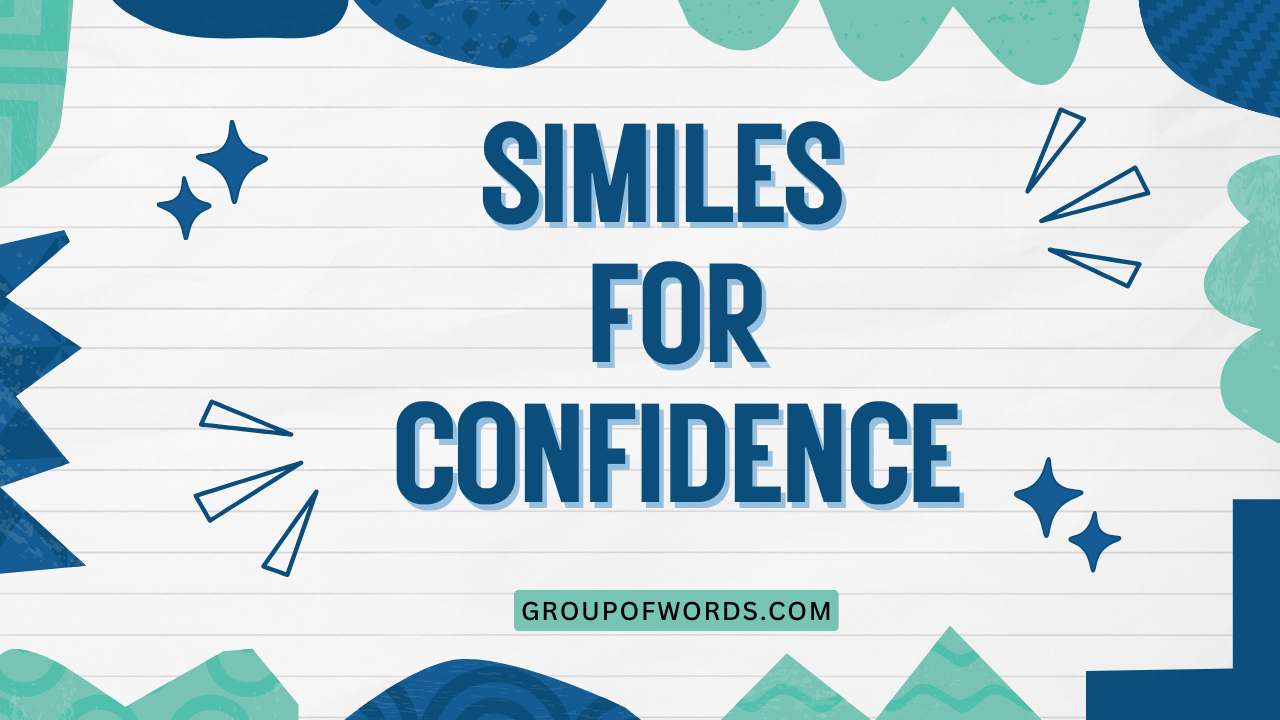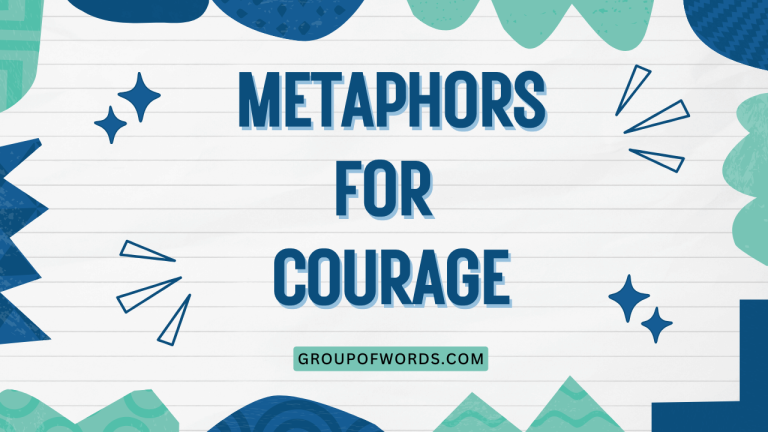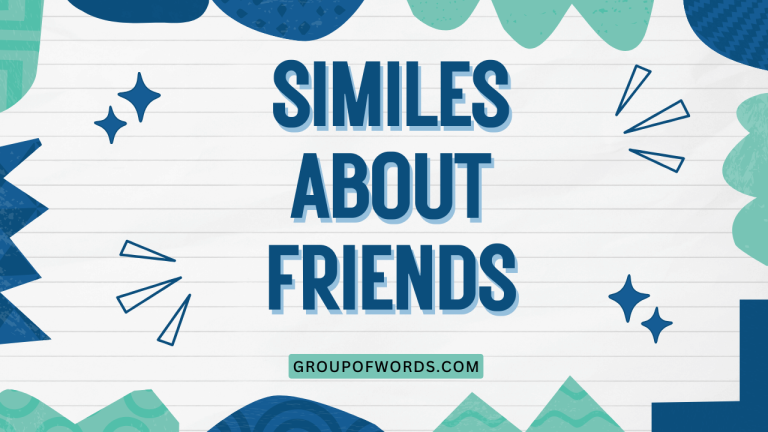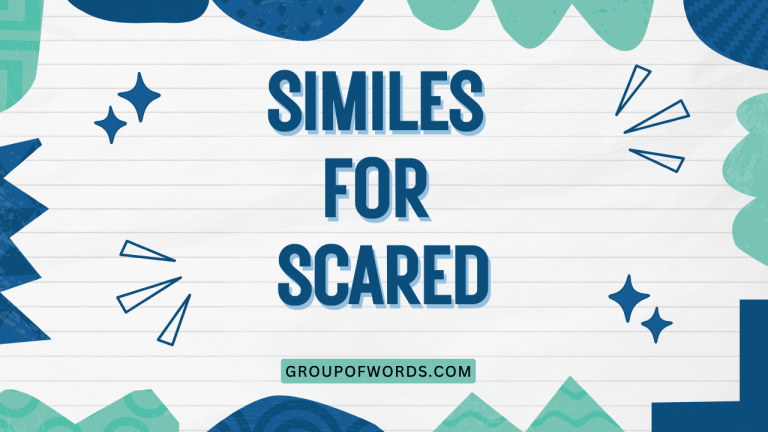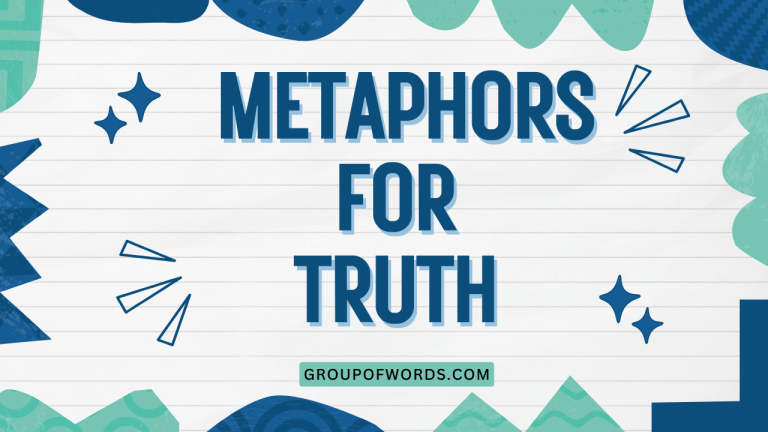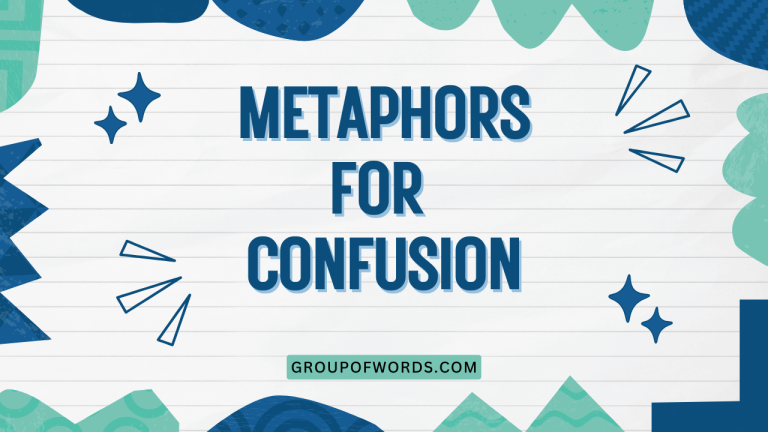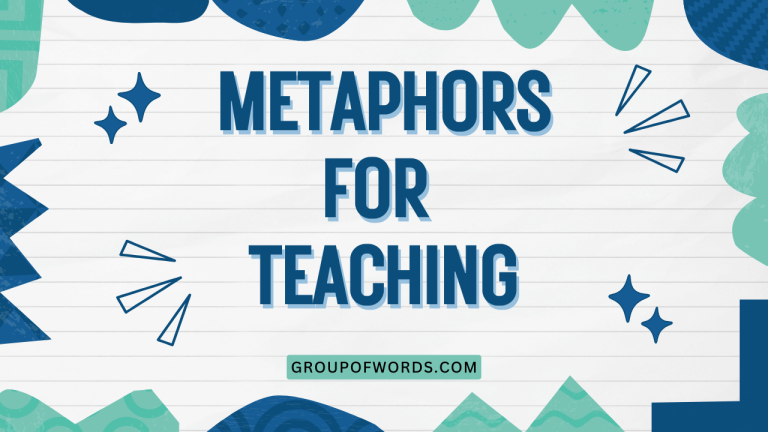Similes for Confidence: A Guide to Expressing Self-Assurance
Confidence is a powerful trait, and being able to articulate it effectively is crucial in various aspects of life. Similes, with their vivid comparisons, provide a creative and engaging way to express confidence.
This article delves into the world of similes used to describe confidence, exploring their structure, types, and usage. Whether you’re a student, writer, or simply someone looking to enhance your communication skills, this guide will equip you with the knowledge and tools to use similes to express confidence with precision and flair.
Table of Contents
- Introduction
- Definition of Simile
- Structural Breakdown of Similes for Confidence
- Types of Confidence Expressed Through Similes
- Examples of Similes for Confidence
- Usage Rules for Similes of Confidence
- Common Mistakes When Using Similes for Confidence
- Practice Exercises
- Advanced Topics: Nuances and Subtleties
- Frequently Asked Questions
- Conclusion
Introduction
Expressing confidence effectively requires a nuanced understanding of language. Similes, a type of figurative language, offer a powerful way to convey the essence of confidence through vivid comparisons.
By associating confidence with relatable objects or concepts, similes make the abstract quality of confidence more tangible and impactful. This article provides a comprehensive guide to using similes to describe confidence, covering everything from basic definitions to advanced usage techniques.
This guide will be beneficial to English language learners, writers looking to add depth to their descriptions, and anyone interested in improving their communication skills.
Definition of Simile
A simile is a figure of speech that compares two unlike things using the words “like” or “as.” Its purpose is to create a vivid image or make a connection between two seemingly different concepts, enhancing understanding and adding depth to descriptions. Similes are a fundamental tool in both written and spoken language, allowing for creative expression and a more engaging communication style. Unlike metaphors, which directly equate two things, similes acknowledge the differences while highlighting a shared quality.
In the context of describing confidence, similes are used to relate the feeling or behavior associated with confidence to something more concrete or easily understood. For instance, saying someone is “as steady as a rock” conveys their unwavering confidence in a readily understandable way.
Structural Breakdown of Similes for Confidence
Similes, at their core, follow a simple structure. Understanding this structure is crucial for crafting effective and impactful comparisons.
The basic structure involves three key components:
- The subject: This is the person or entity whose confidence is being described.
- The linking word: This is either “like” or “as,” which connects the subject to the object of comparison.
- The object of comparison: This is the thing or concept to which the subject’s confidence is being compared.
For example, in the simile “She was as confident as a lion,” “she” is the subject, “as” is the linking word, and “a lion” is the object of comparison. The effectiveness of a simile depends on the relevance and clarity of the comparison.
The object of comparison should evoke a strong sense of confidence or a related quality, allowing the reader or listener to easily grasp the intended meaning. A powerful simile helps to paint a picture and enhance the impact of the description.
Types of Confidence Expressed Through Similes
Confidence is a multifaceted concept, encompassing various aspects of self-assurance and capability. Similes can be tailored to express these different facets, adding nuance and precision to your descriptions.
Here are some common types of confidence and how they can be conveyed through similes.
Self-Assuredness
Self-assuredness refers to a quiet, internal sense of certainty and belief in one’s own abilities. It’s a deep-seated conviction that allows individuals to approach challenges with a calm and collected demeanor.
Similes that express self-assuredness often involve comparisons to objects or concepts that evoke stability, inner strength, and unwavering belief.
Boldness
Boldness is a more outward display of confidence, characterized by a willingness to take risks and face challenges head-on. It involves a sense of fearlessness and a proactive approach to pursuing goals.
Similes that express boldness often involve comparisons to animals known for their courage, natural forces, or actions that demonstrate daring.
Poise
Poise is a refined form of confidence that manifests as grace under pressure. It involves maintaining composure and elegance even in challenging situations.
Similes that express poise often involve comparisons to objects or concepts that evoke balance, control, and effortless grace.
Resilience
Resilience refers to the ability to bounce back from setbacks and adversity. It involves a strong sense of self-belief and the determination to overcome obstacles.
Similes that express resilience often involve comparisons to objects or concepts that evoke strength, adaptability, and the ability to recover from damage.
Examples of Similes for Confidence
The following sections provide examples of similes categorized by the type of confidence they express. Each example is designed to illustrate how similes can be used to convey different nuances of confidence.
Self-Assuredness Examples
This table provides examples of similes that convey self-assuredness. These similes aim to capture the feeling of internal certainty and unwavering belief in one’s abilities.
They use comparisons to objects and concepts that evoke stability and inner strength.
| Simile | Explanation |
|---|---|
| As steady as a rock | Implies unwavering stability and reliability. |
| Like a lighthouse in a storm | Suggests providing guidance and stability in difficult times. |
| As grounded as an ancient tree | Conveys a sense of deep-rooted belief and stability. |
| Like a compass pointing north | Implies a clear sense of direction and purpose. |
| As calm as a still lake | Suggests inner peace and composure. |
| Like a seasoned captain navigating rough seas | Implies experience and skill in handling difficult situations. |
| As solid as a brick wall | Conveys strength and impenetrability. |
| Like a mountain standing tall | Suggests resilience and unwavering presence. |
| As sure as the sun rises | Implies absolute certainty and predictability. |
| Like a well-built bridge | Suggests reliability and the ability to support great weight. |
| As confident as a seasoned performer on stage | Implies comfort and expertise in a public setting. |
| Like a general planning a strategic campaign | Suggests foresight and meticulous planning skills. |
| As unwavering as a north star | Conveys steadfastness and reliability. |
| Like a deep, calm ocean | Implies profound knowledge and tranquility. |
| As self-possessed as a queen on her throne | Suggests inherent authority and composure. |
| Like a skilled surgeon performing a delicate operation | Implies precision and expertise under pressure. |
| As certain as gravity | Conveys unwavering assurance and inevitability. |
| Like a master chess player anticipating every move | Suggests strategic thinking and confidence in one’s abilities. |
| As secure as a vault | Implies a deep sense of safety and protection. |
| Like a seasoned teacher guiding their students | Suggests experience and assurance in leadership. |
| As resolute as a judge delivering a verdict | Conveys decisiveness and unwavering conviction. |
| Like an architect designing a skyscraper | Implies vision, planning and the ability to create something impressive. |
Boldness Examples
This table showcases similes that express boldness. These similes are designed to capture the sense of fearlessness and willingness to take risks.
They use comparisons to animals known for their courage and actions that demonstrate daring.
| Simile | Explanation |
|---|---|
| As bold as a lion | Implies fearlessness and courage. |
| Like a charging bull | Suggests unstoppable force and determination. |
| As daring as a tightrope walker | Conveys a willingness to take risks. |
| Like a storm raging at sea | Implies a powerful and unstoppable force. |
| As fearless as a warrior | Suggests bravery and a willingness to face danger. |
| Like a rocket launching into space | Implies ambition and the drive to reach new heights. |
| As audacious as a gambler | Conveys a willingness to take chances. |
| Like a pioneer exploring uncharted territory | Suggests a spirit of adventure and discovery. |
| As defiant as a rebel | Implies a willingness to challenge authority. |
| Like a climber scaling a mountain | Suggests perseverance and a willingness to overcome obstacles. |
| As adventurous as an explorer | Implies a love for risk and new experiences. |
| Like a firefighter rushing into a burning building | Suggests selfless courage and bravery. |
| As spirited as a wild horse | Conveys untamed energy and freedom. |
| Like a surfer riding a massive wave | Implies skill and courage in the face of danger. |
| As intrepid as a journalist reporting from a war zone | Suggests bravery and a commitment to truth. |
| Like an eagle soaring through the sky | Implies freedom and a commanding presence. |
| As assertive as a CEO leading a company | Conveys leadership and decisiveness. |
| Like a knight charging into battle | Suggests bravery and a willingness to fight for what is right. |
| As commanding as a conductor leading an orchestra | Implies authority and control. |
| Like a race car driver speeding around the track | Suggests speed, skill, and a willingness to take risks. |
| As unstoppable as a freight train | Conveys immense power and momentum. |
| Like a tornado ripping through the landscape | Implies a force of nature that cannot be ignored. |
Poise Examples
This table offers similes that express poise. These similes capture the essence of grace under pressure and the ability to maintain composure in challenging situations.
They use comparisons to objects and concepts that evoke balance, control, and effortless grace.
| Simile | Explanation |
|---|---|
| As graceful as a swan | Implies elegance and composure. |
| Like a ballerina on stage | Suggests balance and control. |
| As composed as a diplomat | Conveys tact and self-control. |
| Like a seasoned dancer | Suggests effortless grace and skill. |
| As smooth as silk | Implies effortless elegance and refinement. |
| Like a well-oiled machine | Implies efficiency and seamless operation. |
| As refined as a vintage wine | Conveys sophistication and elegance. |
| Like a seasoned politician addressing a crowd | Suggests composure and control in a high-pressure environment. |
| As elegant as a panther | Implies grace and power combined. |
| Like a tightrope walker maintaining perfect balance | Suggests skill and control in a precarious situation. |
| As serene as a Zen master | Implies inner peace and composure. |
| Like a conductor leading an orchestra | Suggests control and coordination. |
| As polished as a gemstone | Conveys refinement and elegance. |
| Like a skilled artist creating a masterpiece | Suggests precision and artistry. |
| As unflappable as a seasoned pilot | Implies calmness and control under pressure. |
| Like a chess master planning their next move | Suggests strategic thinking and composure. |
| As collected as a librarian | Conveys calmness and organization. |
| Like a tai chi master performing slow, deliberate movements | Suggests control and inner peace. |
| As poised as a model on a runway | Implies grace and self-assurance. |
| Like a surgeon performing a complicated operation | Suggests precision and skill under pressure. |
| As controlled as a martial arts expert | Conveys discipline and mastery. |
Resilience Examples
This table provides examples of similes that express resilience. These similes are designed to capture the ability to bounce back from setbacks and adversity.
They use comparisons to objects and concepts that evoke strength, adaptability, and the ability to recover from damage.
| Simile | Explanation |
|---|---|
| As resilient as a rubber band | Implies the ability to stretch and return to its original shape. |
| Like a willow in the wind | Suggests flexibility and the ability to bend without breaking. |
| As tough as nails | Conveys strength and durability. |
| Like a phoenix rising from the ashes | Suggests rebirth and renewal after a setback. |
| As steadfast as an oak tree | Implies strength and unwavering resilience. |
| Like a ship weathering a storm | Implies the ability to withstand difficult challenges. |
| As adaptable as a chameleon | Conveys the ability to adjust to changing circumstances. |
| Like a seed sprouting through concrete | Suggests the ability to overcome obstacles and thrive. |
| As unbreakable as a diamond | Implies incredible strength and durability. |
| Like a river carving its path through stone | Suggests perseverance and the power to overcome obstacles. |
| As enduring as the pyramids | Implies lasting strength and resilience. |
| Like a plant growing back after being pruned | Suggests the ability to recover and thrive after a setback. |
| As unwavering as a lighthouse in a storm | Conveys steadfastness and reliability in difficult times. |
| Like a boxer getting back up after being knocked down | Suggests the ability to recover from setbacks and keep fighting. |
| As invincible as a superhero | Implies unmatched strength and resilience. |
| Like a tree regrowing its leaves after winter | Suggests renewal and the ability to bounce back from adversity. |
| As persistent as a dripping faucet | Conveys unwavering determination and the ability to wear down obstacles. |
| Like a rock weathering the elements | Suggests strength and the ability to withstand the test of time. |
| As determined as a marathon runner | Implies perseverance and the ability to endure hardship. |
| Like a surgeon performing a life-saving operation | Suggests skill and the ability to overcome critical challenges. |
| As indefatigable as a tireless worker | Conveys unwavering energy and persistence. |
Usage Rules for Similes of Confidence
While similes offer creative freedom, adhering to certain rules ensures clarity and impact. The following guidelines will help you use similes of confidence effectively:
- Ensure Relevance: The object of comparison should have a clear and direct connection to confidence. The comparison should feel natural and logical.
- Avoid Clichés: Overused similes can lose their impact. Strive for originality and creativity in your comparisons.
- Maintain Clarity: The comparison should be easily understood. Avoid obscure or overly complex references.
- Consider Context: The appropriateness of a simile depends on the context. Choose similes that align with the tone and style of your writing or speech.
- Use Sparingly: Overusing similes can make your writing feel forced or unnatural. Use them judiciously to enhance your descriptions.
Remember that the goal of a simile is to enhance understanding and create a vivid image. By following these rules, you can ensure that your similes of confidence are both effective and engaging.
Common Mistakes When Using Similes for Confidence
Even experienced writers can make mistakes when using similes. Being aware of these common pitfalls can help you avoid them and improve your writing.
Here are some frequent errors to watch out for:
- Using Inaccurate Comparisons: Comparing confidence to something that doesn’t evoke strength or assurance.
- Incorrect: “He was as confident as a nervous kitten.”
- Correct: “He was as confident as a seasoned performer.”
- Overusing Clichés: Relying on tired and unoriginal similes.
- Cliché: “She was as brave as a lion.”
- Improved: “She was as brave as a firefighter rushing into a burning building.”
- Creating Confusing Comparisons: Using obscure or complex references that are difficult to understand.
- Confusing: “He was as confident as a Boltzmann brain.”
- Clear: “He was as confident as a chess master.”
- Mixing Metaphors and Similes: Inconsistently switching between direct comparisons and using “like” or “as.”
- Incorrect: “She was a rock, as steady as a mountain.”
- Correct: “She was as steady as a rock.”
- Using too many similes in close proximity: Overusing similes can make your writing sound forced.
- Overuse: “He approached the task as confident as a lion, like a general planning a battle, and as steady as a rock.”
- Improved: “He approached the task with the confidence of a seasoned general.”
By avoiding these common mistakes, you can ensure that your similes of confidence are clear, impactful, and engaging.
Practice Exercises
Test your understanding of similes for confidence with these practice exercises. Each exercise will challenge you to either identify the correct simile or create your own based on a given scenario.
Exercise 1: Identifying Correct Similes
Choose the simile that best expresses confidence in each sentence.
| Question | Options | Answer |
|---|---|---|
| 1. Her presentation was ______. | a) as shaky as a leaf, b) as smooth as silk, c) as rough as sandpaper | b) as smooth as silk |
| 2. He approached the challenge ______. | a) like a hesitant mouse, b) like a charging bull, c) like a timid rabbit | b) like a charging bull |
| 3. Her resilience was ______. | a) as fragile as glass, b) as resilient as a rubber band, c) as delicate as a flower | b) as resilient as a rubber band |
| 4. His composure was ______. | a) like a chaotic storm, b) like a tranquil lake, c) like a turbulent sea | b) like a tranquil lake |
| 5. She faced the criticism ______. | a) as vulnerable as a newborn, b) as confident as a seasoned debater, c) as insecure as a child | b) as confident as a seasoned debater |
| 6. He spoke ______. | a) as quietly as a mouse, b) as boldly as a lion, c) as softly as a feather | b) as boldly as a lion |
| 7. Her determination was ______. | a) like a gentle breeze, b) like a persistent drizzle, c) like a raging torrent | c) like a raging torrent |
| 8. He remained ______. | a) as calm as a hurricane, b) as steady as a rock, c) as anxious as a student before an exam | b) as steady as a rock |
| 9. Her leadership was ______. | a) as tentative as a beginner, b) as assertive as a CEO, c) as unsure as a lost child | b) as assertive as a CEO |
| 10. His conviction was ______. | a) as wavering as a flag in the wind, b) as unwavering as a north star, c) as doubtful as a skeptic | b) as unwavering as a north star |
Exercise 2: Creating Similes
Create a simile to describe the confidence of the person in each scenario.
| Scenario | Your Simile |
|---|---|
| 1. A surgeon performing a complex operation. | As confident as a master surgeon performing a life-saving operation. |
| 2. A public speaker addressing a large audience. | Like a seasoned orator captivating a crowd with their words. |
| 3. An athlete competing in the Olympics. | As determined as an Olympic athlete striving for gold. |
| 4. A student presenting their research findings. | Like a scholar presenting groundbreaking research. |
| 5. A negotiator closing a major deal. | As poised as a master negotiator securing a landmark agreement. |
| 6. A mountain climber scaling a difficult peak. | As resolute as a climber conquering Everest. |
| 7. An artist creating a masterpiece. | Like a master artist bringing a canvas to life with vibrant colors. |
| 8. A firefighter rescuing people from a burning building. | As brave as a firefighter rushing into a burning building to save lives. |
| 9. A pilot landing a plane in a storm. | As unflappable as a seasoned pilot landing a plane in turbulent weather. |
| 10. A chess player making a winning move. | Like a grandmaster making a decisive move in a championship game. |
Advanced Topics: Nuances and Subtleties
For advanced learners, exploring the nuances and subtleties of similes can add depth and sophistication to your writing. Consider the following advanced topics:
- Combining Similes: Using multiple similes to create a more complex and layered description.
- Subverting Expectations: Creating similes that initially seem contradictory but ultimately reveal a deeper truth.
- Using Similes to Create Tone: Choosing similes that evoke a specific mood or atmosphere.
- Similes and Symbolism: Using similes to connect confidence to broader symbolic meanings.
Mastering these advanced techniques will allow you to use similes with greater precision and creativity, enhancing the impact of your writing and communication.
Frequently Asked Questions
Here are some frequently asked questions about using similes for confidence:
- What is the difference between a simile and a metaphor?
A simile compares two things using “like” or “as,” while a metaphor directly equates them without using those words. For example, “He is as brave as a lion” is a simile, while “He is a lion” is a metaphor.
- How can I avoid using clichés in my similes?
Research and brainstorm unique and original comparisons. Think about specific qualities of confidence and find less common associations.
- How do I choose the right object of comparison for a simile of confidence?
Consider the specific type of confidence you want to express (e.g., boldness, poise, resilience) and choose an object that embodies that quality.
- Can I use similes in formal writing?
Yes, but use them sparingly and ensure they are appropriate for the tone and style of the writing. Avoid overly casual or informal comparisons.
- How many similes should I use in a paragraph?
There is no strict rule, but avoid overusing similes. One or two well-placed similes can be more effective than several that feel forced or unnatural.
- Is it better to use “like” or “as” in a simile?
Both “like” and “as” are acceptable, and the choice often depends on personal preference or the rhythm of the sentence. However, “as” is often used when comparing actions or qualities, while “like” is used when comparing nouns.
- How can I make my similes more vivid and impactful?
Use specific and descriptive language to paint a clear picture in the reader’s mind. Appeal to the senses and evoke strong emotions.
- Are there any cultural considerations when using similes?
Yes, be aware that certain objects or concepts may have different connotations in different cultures. Choose comparisons that are universally understood or explain them if necessary.
Conclusion
Similes provide a powerful and creative way to express confidence in its various forms. By understanding the structure, types, and usage rules of similes, you can enhance your writing and communication skills, allowing you to convey the essence of confidence with precision and flair.
Remember to choose relevant and original comparisons, avoid clichés, and consider the context in which you are using the simile. With practice and attention to detail, you can master the art of using similes to express confidence, adding depth and impact to your words.
Keep exploring different comparisons and refining your skills to become a more effective and engaging communicator.
